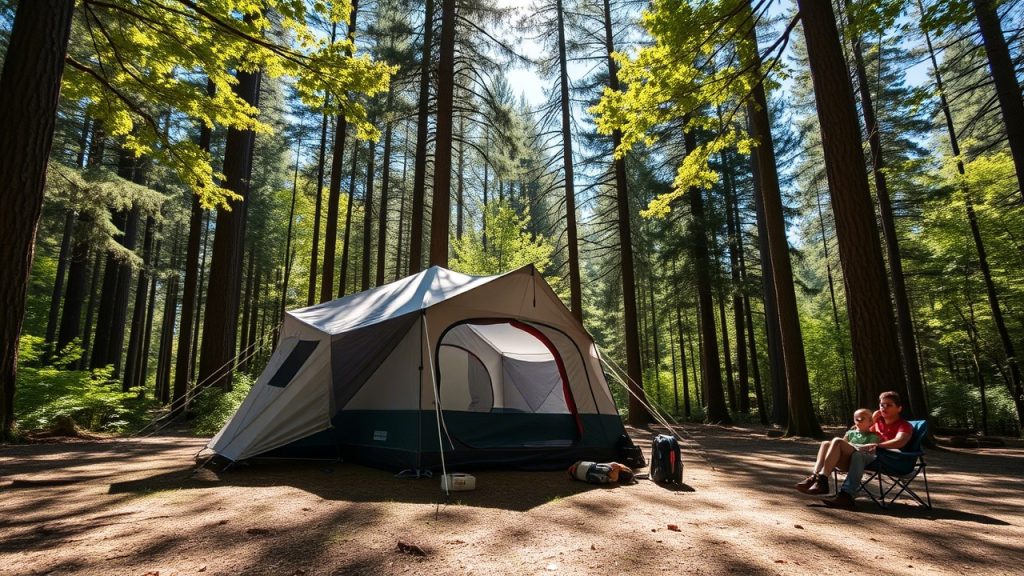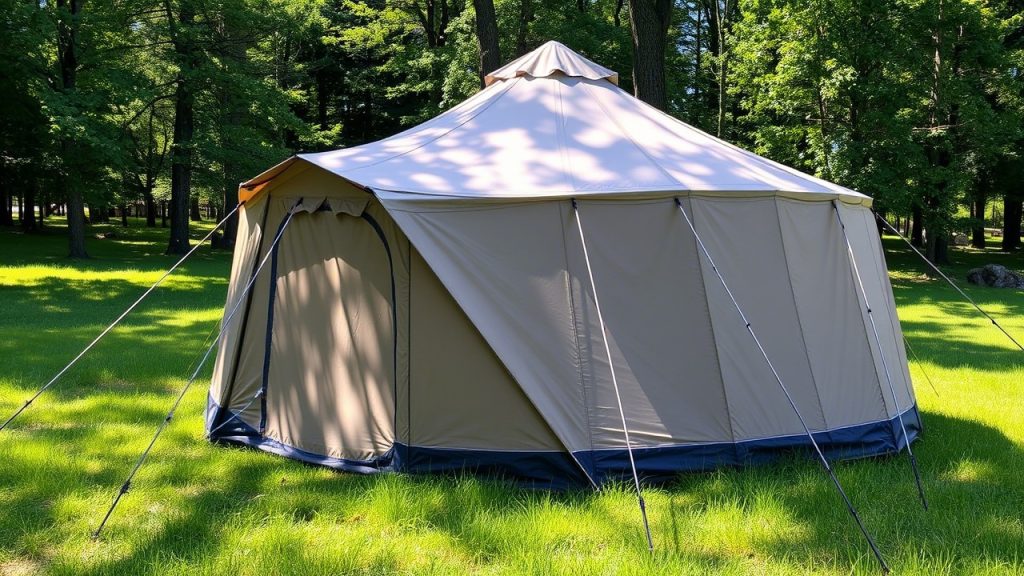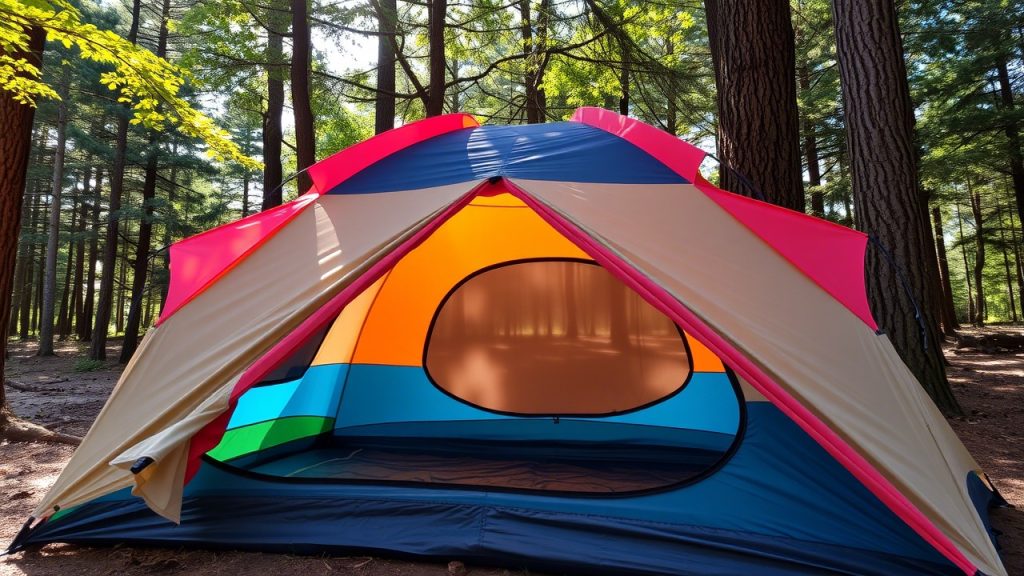When you’re out in the wild, few things are as important as a reliable tent. It’s your shelter, your safe zone, and your protection against unpredictable weather. Whether you’re heading into the backcountry, setting up a family campsite, or just enjoying a weekend music festival, the right tent can make all the difference between a memorable adventure and a miserable experience.
We’ll walk you through the 10 best tents to beat the elements on any trip. We’ll also cover how to choose the right tent, tips for maximizing its performance, and answers to the most common questions campers ask. By the end of this article, you’ll feel confident picking the perfect tent for your next trip — rain, wind, or shine.
10 Best Tents to Beat the Elements on Any Trip
1. MSR Hubba Hubba NX 2-Person Lightweight Tent
The MSR Hubba Hubba NX is a gold standard for backpackers. Weighing just under 4 pounds, it’s lightweight yet doesn’t sacrifice comfort or durability. This tent balances minimal weight with maximum functionality, featuring two large doors, roomy vestibules for gear storage, and a freestanding design that makes setup easy.
Its rainfly is made with durable, coated nylon that holds up well in rain and moderate wind, and the ventilation system reduces condensation inside. Backpackers and hikers particularly love it for long treks where every ounce counts.

2. Big Agnes Copper Spur HV UL2
Big Agnes is a favorite name among ultralight campers, and the Copper Spur HV UL2 is a perfect example of why. It offers a surprisingly roomy interior thanks to its steep walls and high-volume design. Despite weighing only 3 pounds, it provides excellent weather protection, with a fully waterproof rainfly, reinforced seams, and lightweight yet tough poles.
Backpackers, bikepackers, and even thru-hikers appreciate its balance of comfort and weight. Plus, its multiple gear pockets, media sleeves, and color-coded setup make it a joy to use in the field.
3. REI Co-op Half Dome SL 2+
REI’s Half Dome SL 2+ is known for providing impressive space at an affordable price. It’s slightly larger than a standard two-person tent, making it great for taller campers or couples with extra gear. Ventilation is excellent, thanks to large mesh panels and multiple vents, which help regulate temperature and prevent condensation.
The tent’s durability stands up to heavy rain, wind, and even the occasional unexpected frost. This is a fantastic option for weekend warriors or anyone looking to get high-end performance without a high-end price tag.

4. Coleman WeatherMaster 10-Person Tent
For families or groups, the Coleman WeatherMaster 10-Person Tent is hard to beat. With room for up to 10 people and a screened porch for lounging, it’s like having a cabin in the woods. Coleman’s WeatherTec system features welded corners, inverted seams, and a tub-style floor to keep rain out, even in downpours.
The tent’s hinged door is a thoughtful touch that adds convenience for large groups. This tent is ideal for car camping trips, family reunions, or music festivals where you want maximum space and comfort.
5. The North Face Wawona 6
The North Face Wawona 6 combines durability with livability. With space for six campers and a massive vestibule that functions as a mudroom or storage space, this tent is built for groups who want to stay organized. The hybrid double-wall construction increases weather protection while maintaining ventilation.
Its high ceilings allow most adults to stand up inside, which is a luxury in the world of tents. This is an excellent choice for families or groups who plan on camping frequently and want a tent that will hold up season after season.

6. NEMO Hornet 2P Ultralight Backpacking Tent
The NEMO Hornet 2P is one of the lightest freestanding tents on the market, weighing in at just around 2 pounds. It’s a favorite among ultralight backpackers, thru-hikers, and bikepackers. Despite its minimal weight, the Hornet 2P offers dual doors, dual vestibules, and a surprisingly spacious interior thanks to its innovative design.
The tent handles light to moderate rain and wind well but isn’t intended for extreme conditions or heavy snow. When every ounce matters, this tent delivers excellent comfort-to-weight performance.
7. Kelty Late Start 4
Kelty’s Late Start 4 is a budget-friendly tent that delivers more than its price suggests. It’s roomy, reliable, and easy to pitch, making it a fantastic option for beginner campers or families. Its rainfly is fully waterproof, and the aluminum poles provide a stable frame that resists moderate winds.
Color-coded clips simplify the setup, and the tent’s packed weight of around 7 pounds makes it manageable for short backpacking trips or car camping. For a low-cost tent that still performs well in unpredictable weather, the Late Start 4 is a top pick.

8. Hilleberg Nallo 3 GT
For extreme weather and expedition use, the Hilleberg Nallo 3 GT is in a class of its own. Designed for mountaineering, winter camping, and rugged adventures, this tunnel-style tent is built from ultra-strong Kerlon fabric, which offers superb tear resistance and stability in wind and snow.
The extended vestibule adds vital storage space for gear, and its well-engineered ventilation system keeps moisture under control even in harsh conditions. Though expensive, it’s a tent you can rely on in the most demanding environments on Earth.
9. ALPS Mountaineering Lynx 2
The ALPS Mountaineering Lynx 2 is a tried-and-true option for campers looking for reliability and simplicity. It features two doors, two vestibules, and a full-coverage rainfly that shields you from rain and wind. Setup is straightforward with clip-on poles, and the tent’s polyester fly resists UV damage and stretching.
Weighing around 5 pounds, it’s suitable for backpacking trips where weight is less of a priority, as well as for car camping. Add in the lifetime warranty, and you’ve got a great value tent for a wide range of trips.

10. Marmot Tungsten 2P
The Marmot Tungsten 2P stands out with its balance of durability, comfort, and affordability. With a spacious interior and pre-bent poles that maximize headroom, it feels much larger than its footprint suggests. The rainfly, footprint, and color-coded clips are included, making setup smooth and saving you money.
This tent can handle three-season weather with ease, including heavy rain and gusty winds. Whether you’re a solo camper who likes extra space or a couple venturing into the wild, the Tungsten 2P is an excellent all-arounder.
How to Choose the Right Tent for Your Trip
When choosing a tent, several key factors will help you make the right decision:
Weather conditions: Are you camping in summer, during spring rains, or facing snow? Choose a three-season tent for most conditions and a four-season tent for winter or alpine trips.
Capacity: Tent sizes can be deceiving. A two-person tent usually fits two sleeping pads snugly — if you want more space or have a dog or gear, size up.
Weight: If you’re backpacking, focus on lightweight options under 4 pounds per person. For car camping, you can prioritize space and comfort over weight.
Ease of setup: Freestanding tents are typically easier to pitch. Look for color-coded poles and intuitive clip systems if you’re a beginner.
Ventilation: Good airflow prevents condensation. Mesh panels, adjustable vents, and double-wall construction help keep things dry inside.
Durability and material quality: Higher-denier fabrics and aluminum poles usually offer better long-term performance. Cheaper tents often sacrifice durability, so balance cost and quality carefully.

Essential Tent Tips for Bad Weather
Pitch your tent on slightly elevated ground to avoid water pooling
Use all guylines and stakes to maximize stability, especially in wind
Double-check seams and consider seam-sealing lightweight tents
Bring a tarp or footprint to protect the floor and reduce wear
Ventilate as much as possible to minimize condensation buildup
Extra Gear to Improve Your Camping Experience
Besides your tent, consider adding these essentials to your kit:
- Footprint or groundsheet to protect your tent floor
- Extra stakes and guylines for windy conditions
- Rain tarp for added shelter over the tent or cooking area
- Tent repair kit for patching small holes or broken poles
- LED lantern or headlamp to light up your campsite
Common Tent Mistakes to Avoid
Many new campers make mistakes that can lead to a miserable night outdoors. Here are some to avoid:
- Ignoring the weather forecast — pack and prepare for possible rain or wind
- Skipping the practice setup — pitch your tent at home first to get familiar with it
- Forgetting ventilation — even in cold weather, you need airflow to prevent condensation
- Not staking out the tent properly — loose tents flap in the wind and leak in the rain
- Storing it wet — always dry your tent completely before packing it away
11 Frequently Asked Questions
- How do I choose the right size tent?
Choose a tent based on the number of people plus gear. A “2-person” tent often feels tight for two; consider sizing up if you want comfort. - What’s the difference between a three-season and a four-season tent?
Three-season tents handle spring, summer, and fall, offering good rain and wind protection. Four-season tents are built for winter and handle snow, heavy winds, and extreme conditions. - Do I need a tent footprint?
A footprint protects your tent floor from sharp rocks, roots, and moisture. It extends the life of your tent, though it’s sometimes sold separately. - How can I weatherproof my tent?
Use seam sealer, apply a DWR (durable water repellent) spray to the rainfly, stake and guy it out properly, and use a rain tarp in extreme conditions. - What’s the best tent for backpacking?
Lightweight models like the MSR Hubba Hubba NX, Big Agnes Copper Spur, or NEMO Hornet are excellent for backpacking due to their low weight and weather resistance. - What’s the best tent for car camping?
Larger tents like the Coleman WeatherMaster or The North Face Wawona 6 are perfect for car camping where weight isn’t an issue. - Can I use a three-season tent in mild winter conditions?
Yes, if temperatures aren’t extreme and there’s no heavy snow. Add a winter-rated sleeping bag and pad for warmth. - How do I reduce condensation inside the tent?
Ventilate by keeping vents or windows slightly open, avoid cooking inside, and store wet gear outside when possible. - How long will a good tent last?
With care, a quality tent can last 5–10 years or longer. Regular cleaning, drying, and storing properly will extend its lifespan. - Are expensive tents worth the price?
If you camp frequently, backpack long distances, or face harsh weather, premium tents are worth the investment for durability and weight savings. - What’s the best way to store a tent?
Always dry it completely, loosely fold or stuff it, and store it in a cool, dry place. Avoid long-term storage in its compression sack.
Final Thoughts
Choosing the right tent is one of the most important decisions you’ll make when preparing for outdoor adventures. Whether you’re looking for a lightweight shelter to carry up mountains, a roomy basecamp for family vacations, or a stormproof sanctuary for winter camping, the options we’ve covered here are among the 10 best tents to beat the elements on any trip.
Invest in a tent that matches your needs, and you’ll have a reliable home wherever you roam. Happy camping!





